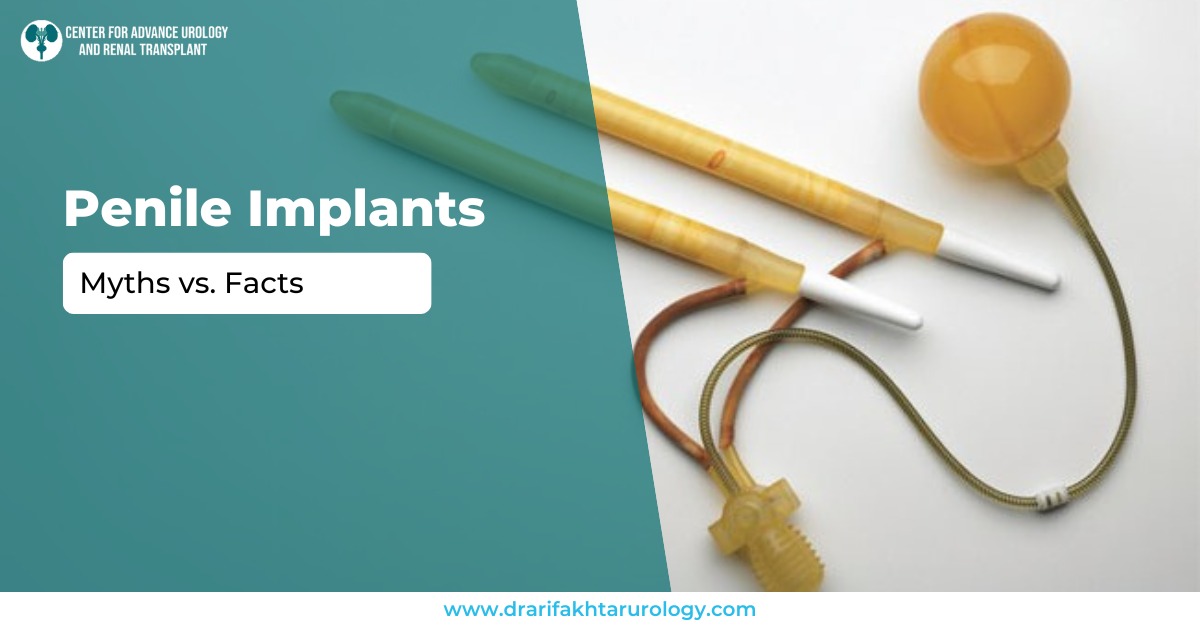Discussions around sexual health are often clouded by misinformation, hesitation, and cultural discomfort. Among the many misunderstood treatments, penile implants are frequently surrounded by myths that can deter patients from exploring viable solutions for erectile dysfunction.
This guide aims to separate fiction from fact, bringing clarity to what penile implant surgery truly involves, and dispelling common myths about penile implants that have no medical basis.
What Are Penile Implants?
Penile implants—also known as penile prosthesis—are medical devices surgically placed inside the penis to help men achieve an erection. These are generally considered when other treatments for erectile dysfunction have failed or are not suitable.
The devices come in various forms and are designed to mimic the natural process of erection with discreet, effective mechanisms.
Myth 1: Penile Implants Are Only for Older Men
Fact:
Age is not the determining factor for candidacy. Penile implant surgery is recommended based on medical need, not the patient’s age. Men with chronic erectile dysfunction, regardless of age, may benefit from the procedure if they are otherwise healthy and unresponsive to medication or pumps.
Myth 2: The Surgery Is Extremely Risky
Fact:
Like any medical procedure, there are risks of penile implants, but they are manageable and rare when the surgery is performed by experienced urologists. Infections, device malfunction, or internal erosion are potential risks, but current surgical methods have reduced complications significantly.
In fact, the success rate of penile implants has steadily improved due to better materials and surgical precision, with satisfaction rates reported between 85–90%.
Myth 3: The Implant Feels Unnatural
Fact:
Modern implants are engineered to provide a natural look and feel. Depending on the types of penile implants used, patients report that both they and their partners are generally unaware of the implant during intimacy unless informed.
The most common types include:
- Malleable penile implant: Semi-rigid rods that can be manually positioned.
- Inflatable implants: Devices that can be pumped for an erection and deflated afterward, offering a more natural experience.
Myth 4: Penile Function Will Be Lost Forever
Fact:
This misconception likely arises from the idea that the implant takes over all function. In reality, penile implant surgery preserves orgasm and ejaculation (if the patient was capable before surgery). What the implant replaces is the erectile rigidity, helping men regain control and confidence.
Myth 5: The Procedure Is Always a Last Resort
Fact:
While typically considered after oral medications and vacuum devices fail, penile implants are not necessarily a “last-ditch” option. For individuals who want a permanent, low-maintenance solution with consistent results, implants may be considered sooner.
Patients dealing with conditions like Peyronie’s disease, diabetes-related erectile dysfunction, or post-prostatectomy complications often benefit greatly.
Myth 6: Implants Are Obvious or Embarrassing
Fact:
There is no external indication that a man has a penile prosthesis. The devices are entirely internal, discreet, and undetectable during daily activities. Even in locker room scenarios or intimate settings, modern implants remain invisible to the eye.
Benefits Backed by Clinical Outcomes
Besides resolving erectile dysfunction, penile implants provide psychological relief, restoring intimacy and self-confidence. Studies consistently show high patient and partner satisfaction.
- The success rate of penile implants (measured through functionality and satisfaction) is among the highest in surgical treatments for erectile dysfunction.
- Patients typically resume sexual activity 6–8 weeks post-surgery.
Understanding the Decision: Is It Right for Every Patient?
While the results are promising, the decision to undergo penile implant surgery must be personalized. Factors such as overall health, underlying conditions, expectations, and understanding of the procedure play crucial roles.
It is important to discuss:
- Available options and types of penile implants
- Lifestyle impact and long-term care
- Surgical recovery and potential risks of penile implants
Conclusion: Facts Dismantle Fear
Misinformation often discourages men from seeking real solutions. The truth is, penile implants are clinically validated, widely used, and highly successful in restoring sexual function for thousands of patients every year.
Debunking myths about penile implants is essential in helping patients make informed, confident choices. With a clear understanding of what penile implant surgery involves—and what it doesn’t—individuals can approach treatment with clarity rather than fear.




